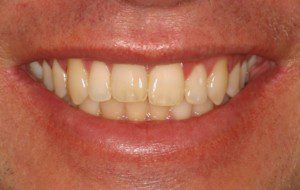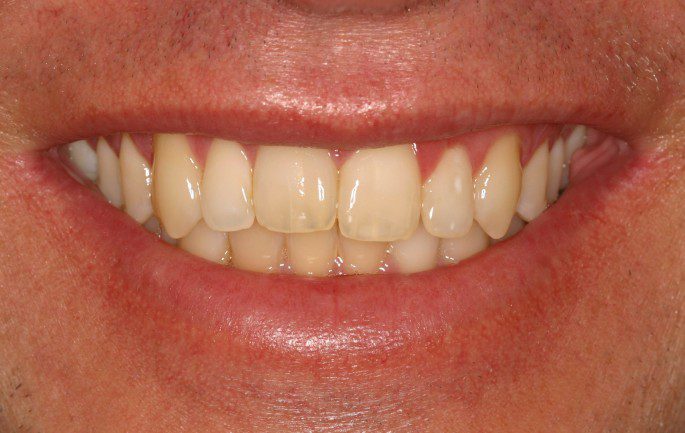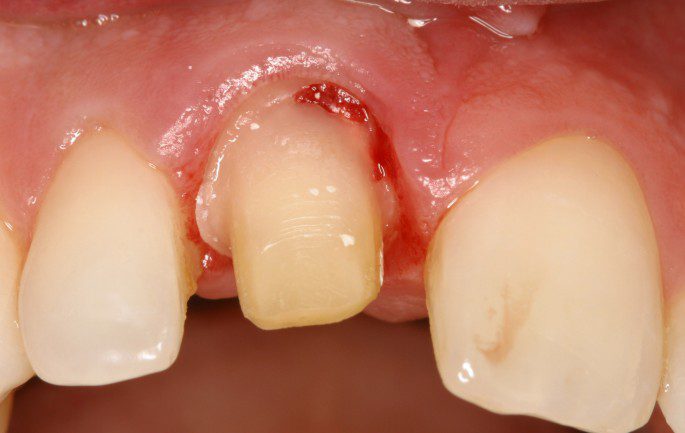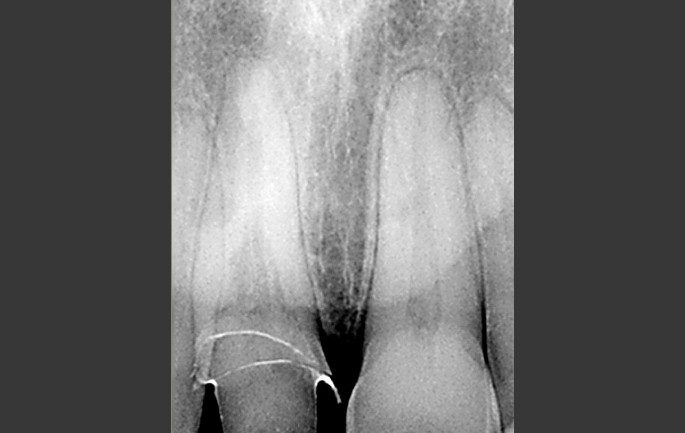Just a few weeks later another pathologic process was noted: "root resorption". Again, childhood trauma can lead to this phenomenon. Root resorption is caused by the body's white blood cells incorrectly recognizing normal cells as abnormal cells and begins attacking them. This can progress slowly, over many years. However, when the tooth in question is challenged by a dental insult such as a orthodontics or a restoration it can accelerate the root resorption as happened in this case. Note the red hole where the tooth meets the gums, just left of the middle.






